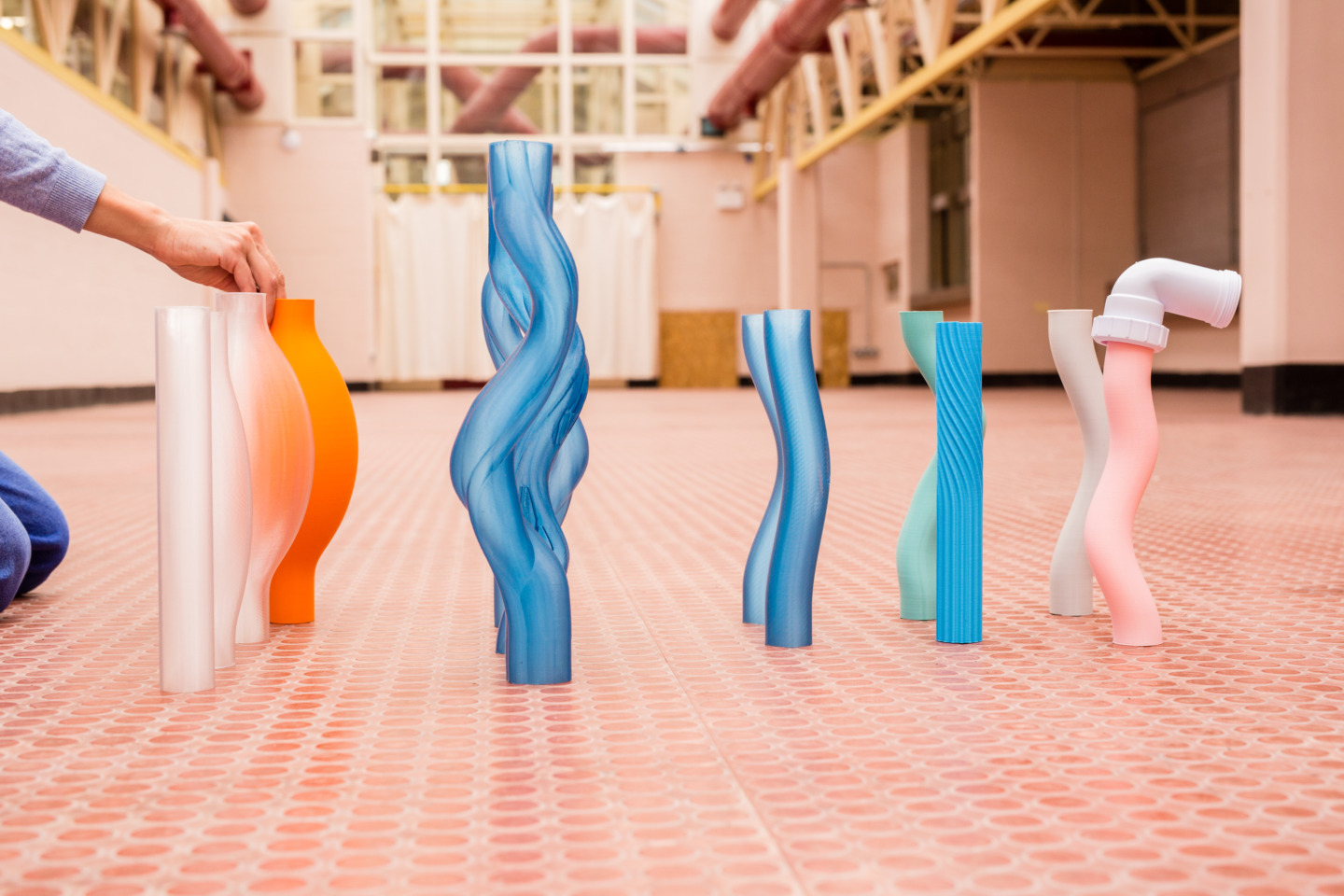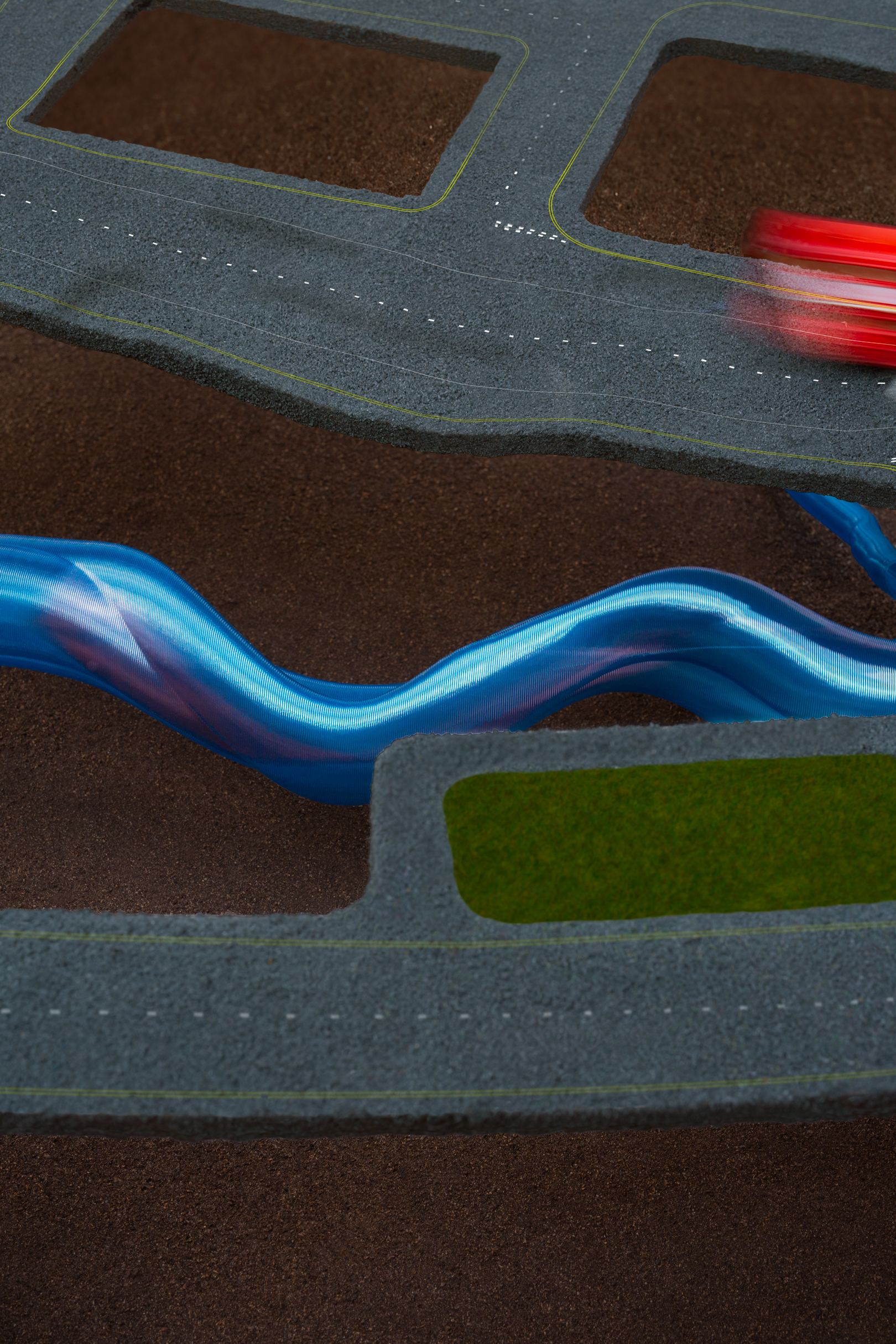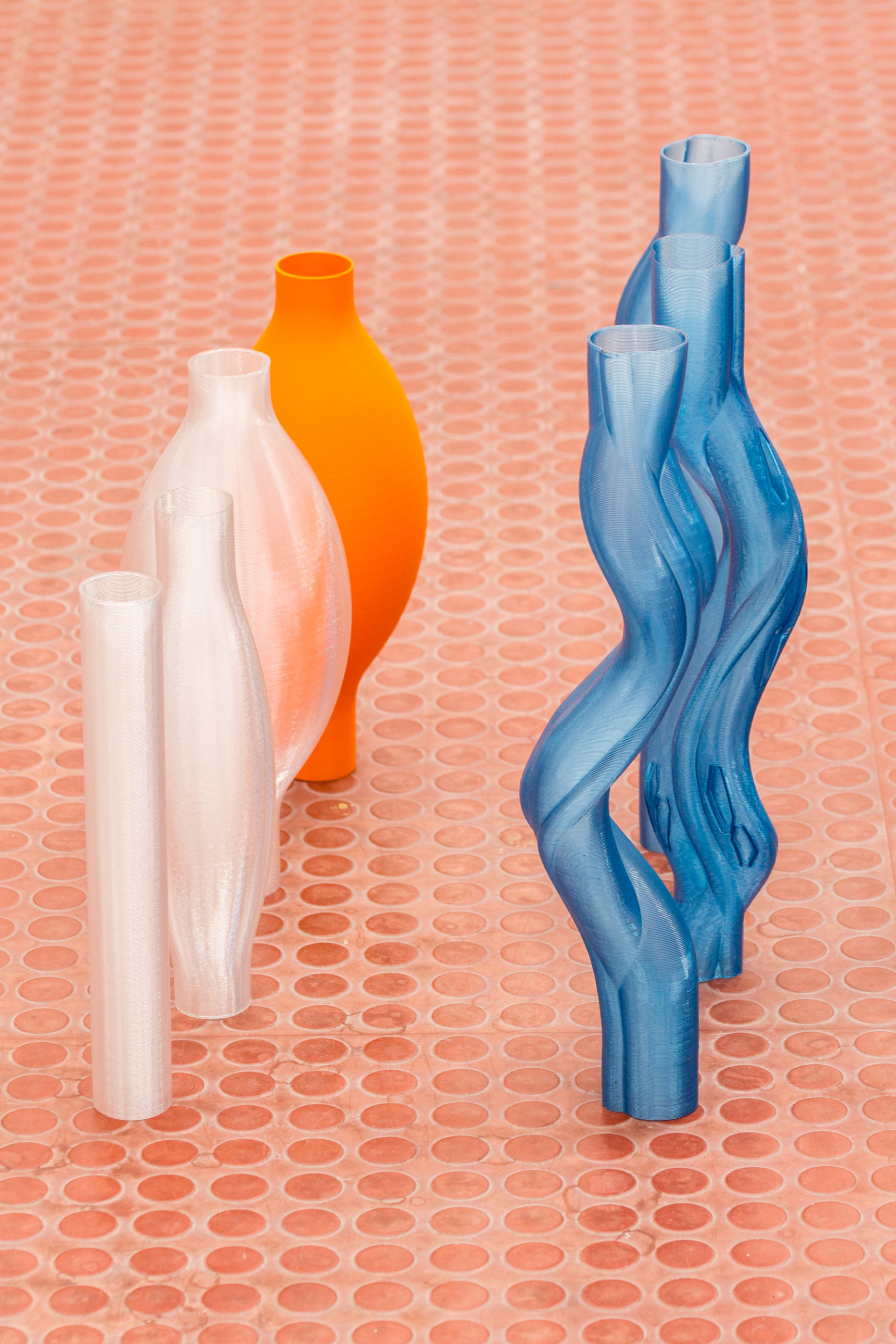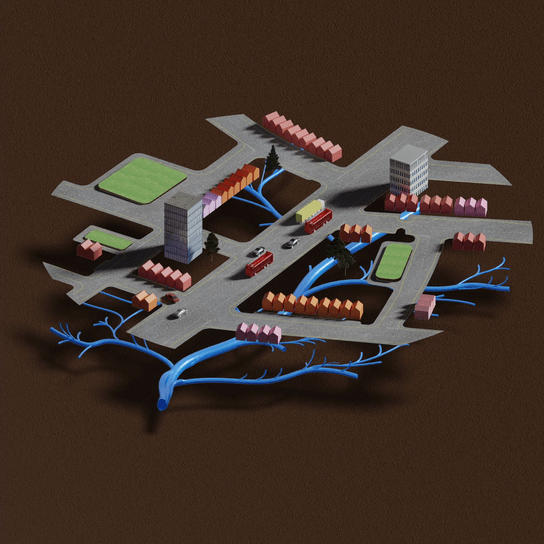
London’s once-revolutionary water supply system is now outdated in its rigidity and inability to move with the city. The Victorian-era infrastructure was built to serve a population of four million — not today’s 8.7 million, or the additional two million expected by 2050. The old pipes buckle and break with ground movement and pressure, while seasonal temperature changes expand and compress joints, causing them to burst. Research reveals that one-quarter of water leaks from the crumbling infrastructure before it even reaches people’s homes. Each week, on average 1,300 pipes are repaired — a costly process that involves manually locating leaks and digging up the roads. Around 600 million litres of drinkable water is lost per day — that’s enough to meet the needs of 20 million people. Rather than thinking about pipes as static 3D objects, we are suggesting the use of intelligent materials that can respond and react to the surrounding environmental pressures over time.


